Creators
Collectives
Think Pieces
Resources
Contribute
Home
CONTRIBUTE
Harris Girls Academy East Dulwich
Jenna for Making Sense
Over the last year in my art practice, I have become interested in exploring my identity as a young Muslim woman. I am very aware that my religion can be portrayed in a negative light by the media, however, I do not wish to highlight this further through my work. I feel that there is often the expectation of minority groups in the UK to constantly educate and refute the many stereotypes that are projected onto us. I wanted to move to a position where I am just exploring the normality of my identity. The everydayness that we all experience. The artwork on display, ‘Repetition of Adjustment, focuses on my personal relationship with my hijab. This interest originally emerged out of an early experiment exploring folding where I used string to create a print. I was reminded of the folds of my hijab from the lines that came about from the movement of the string, that had been dipped in paint, being pulled after sandwiched between two sheets of paper. It was similar to the movement of my routine of wearing my physical hijab.

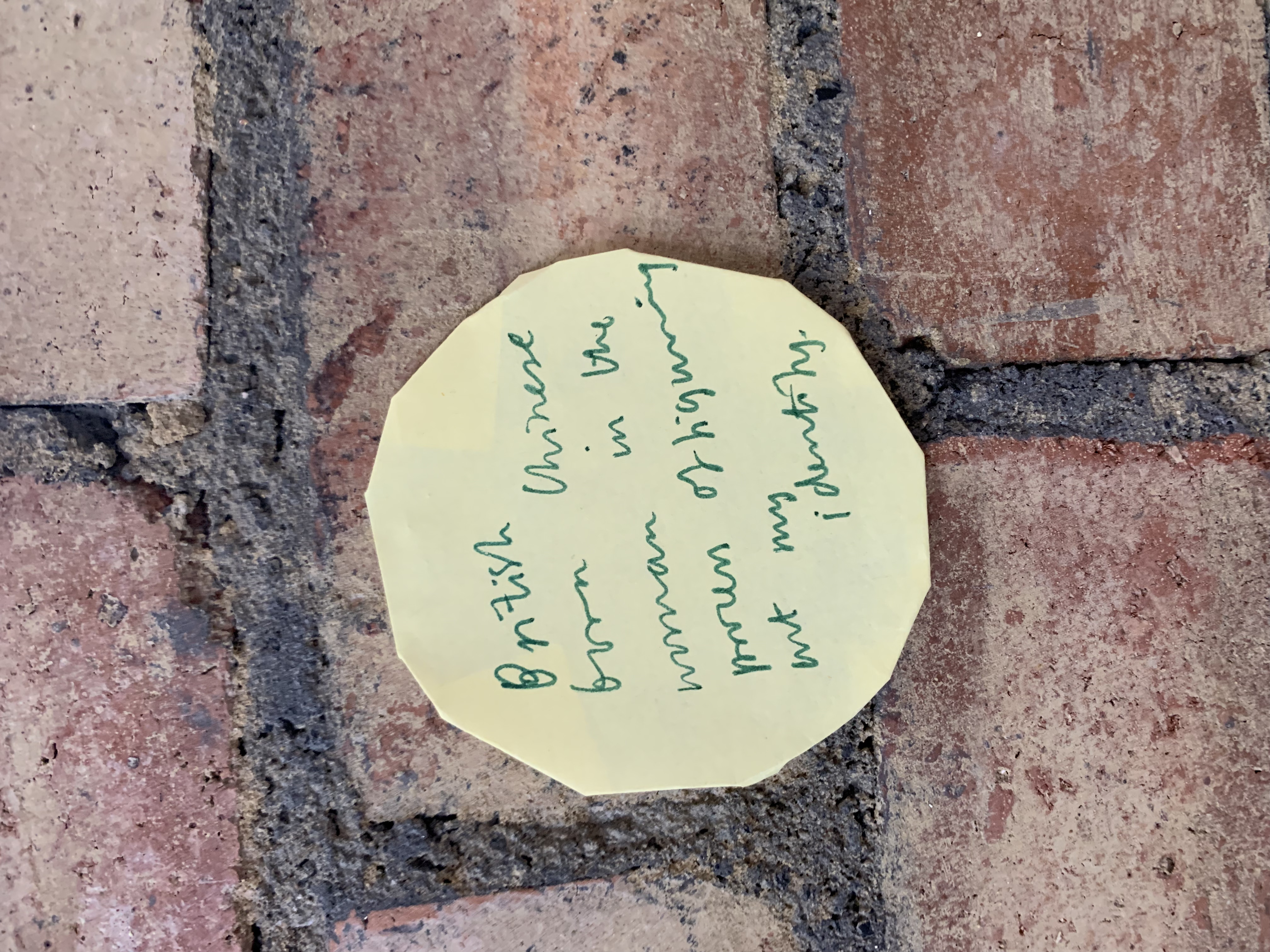
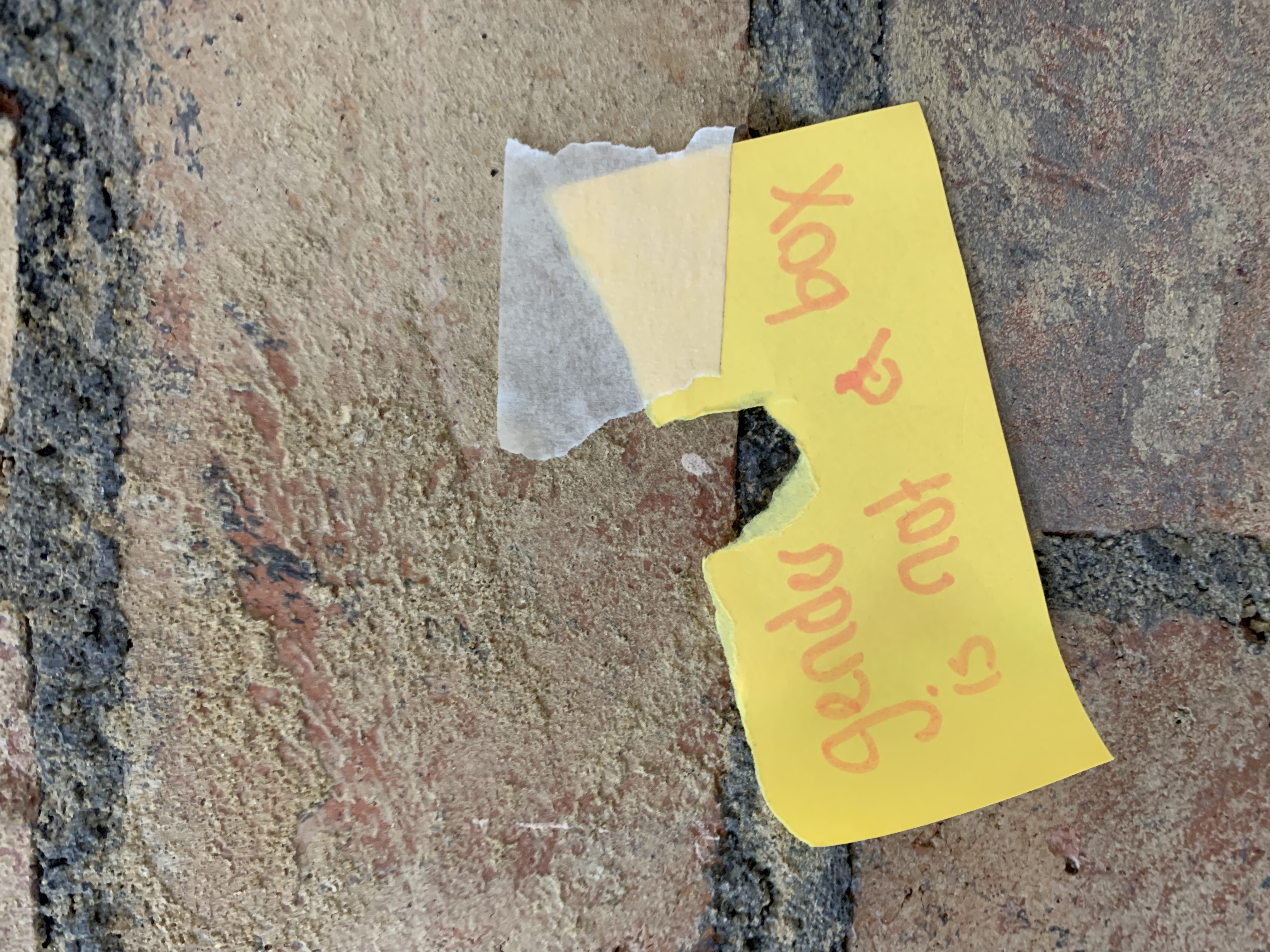
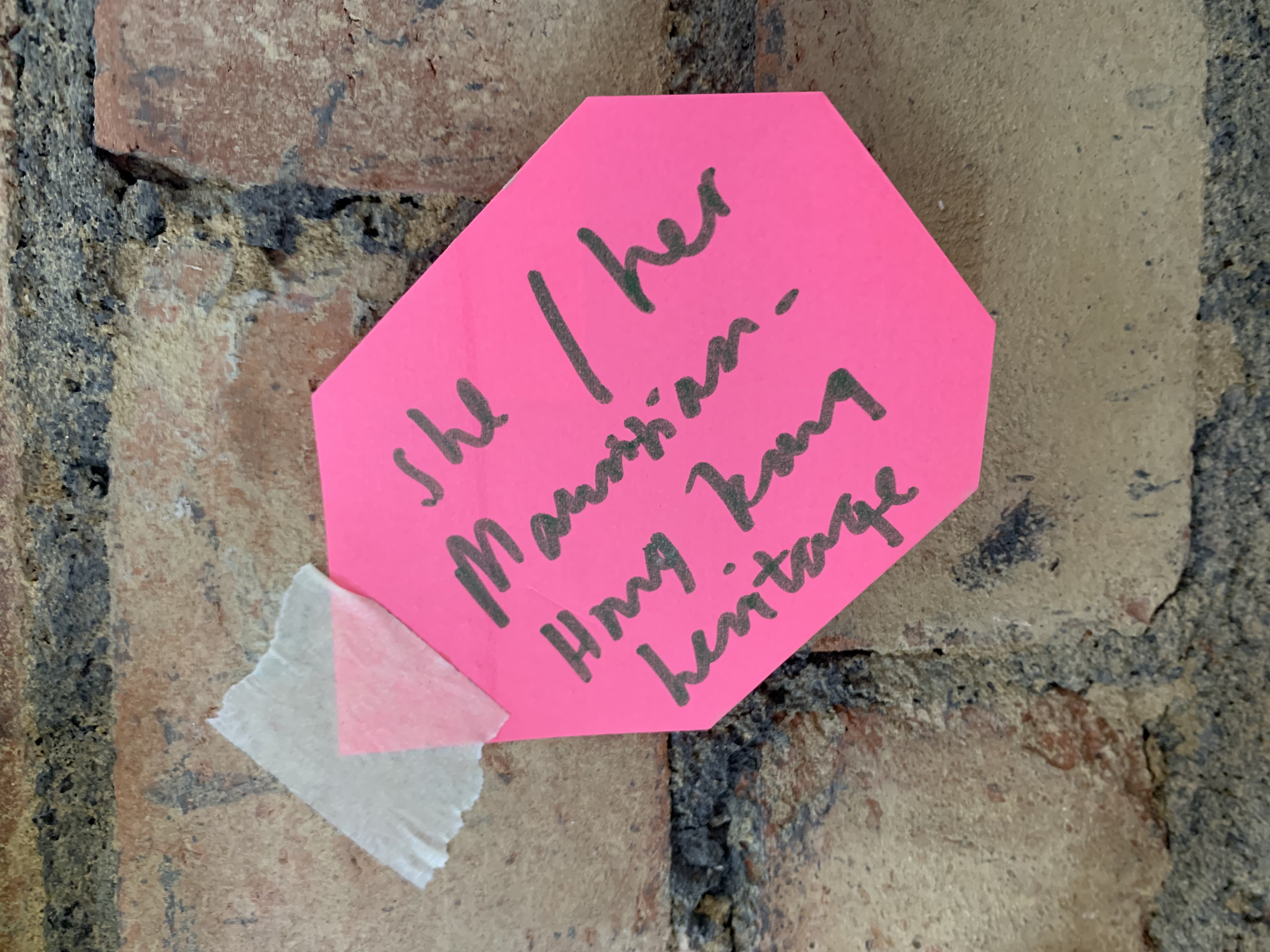
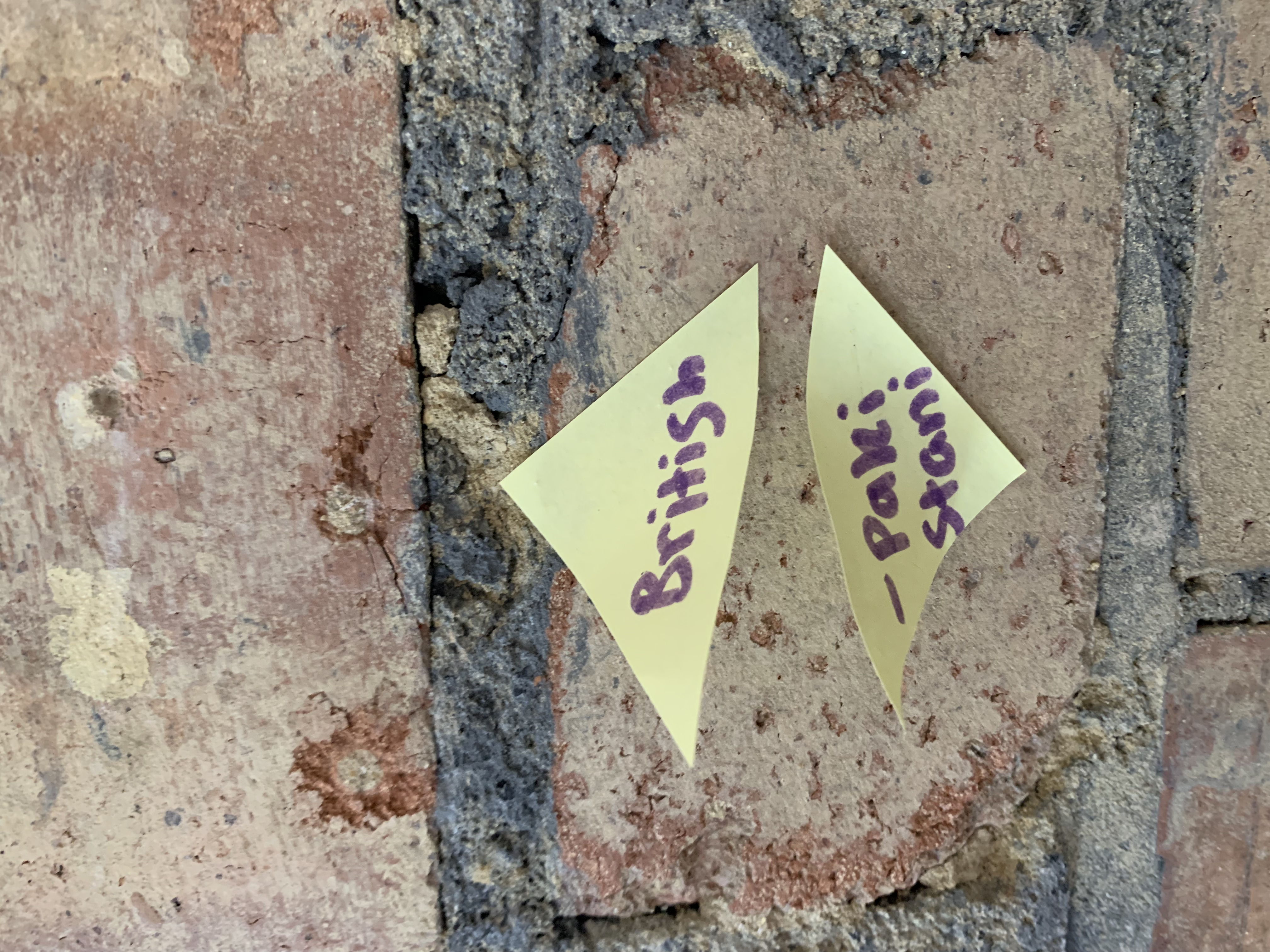
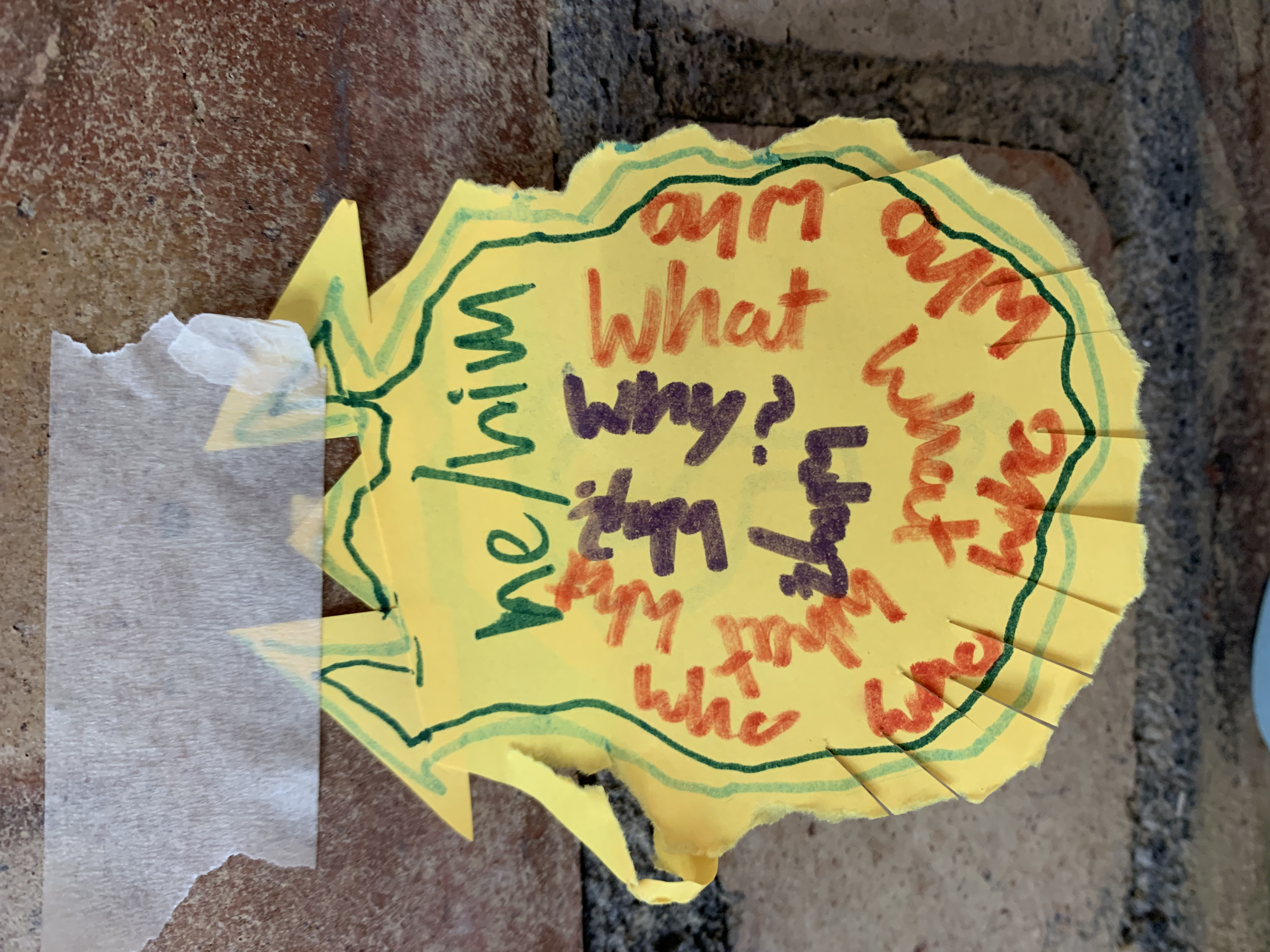
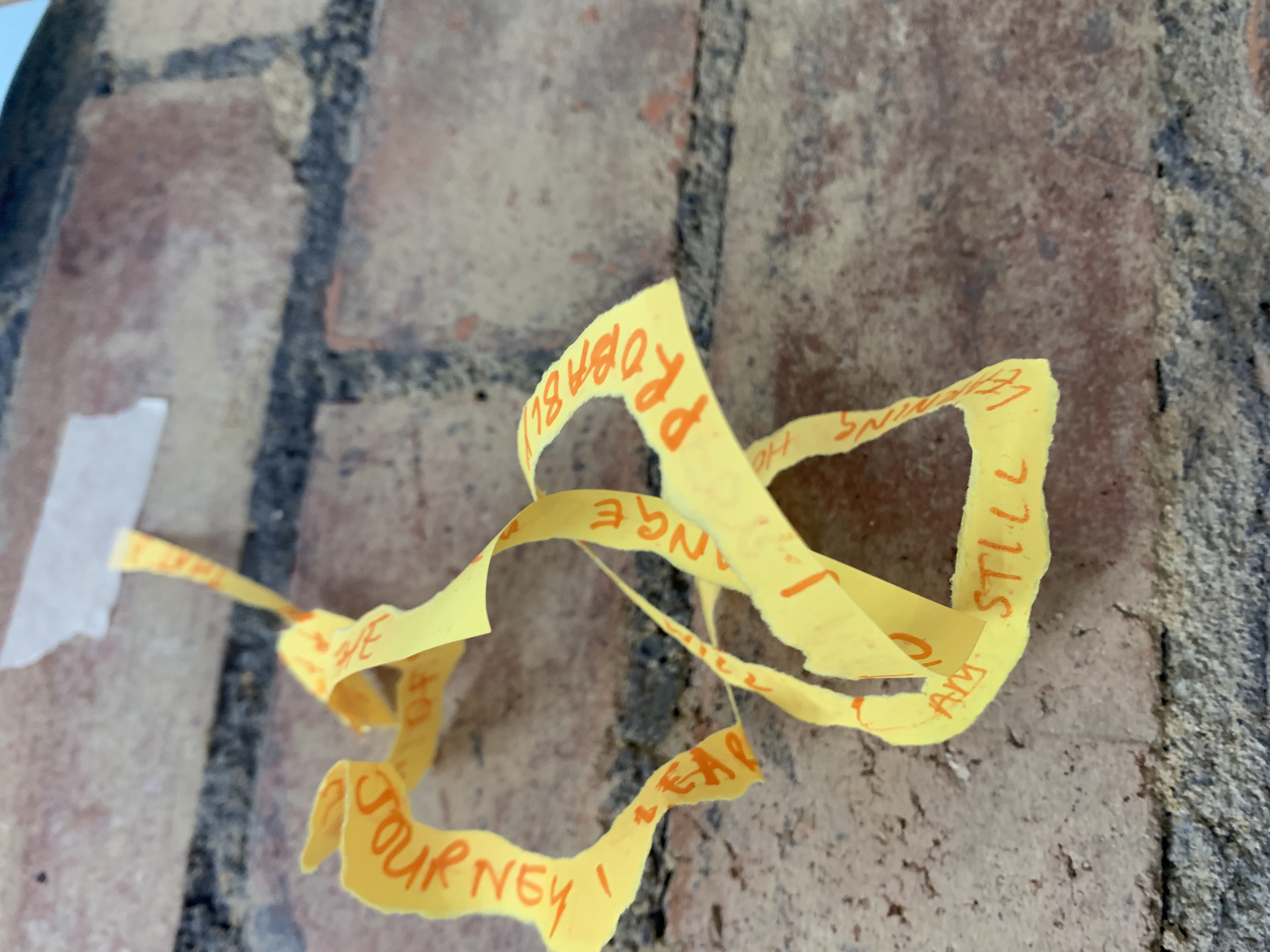


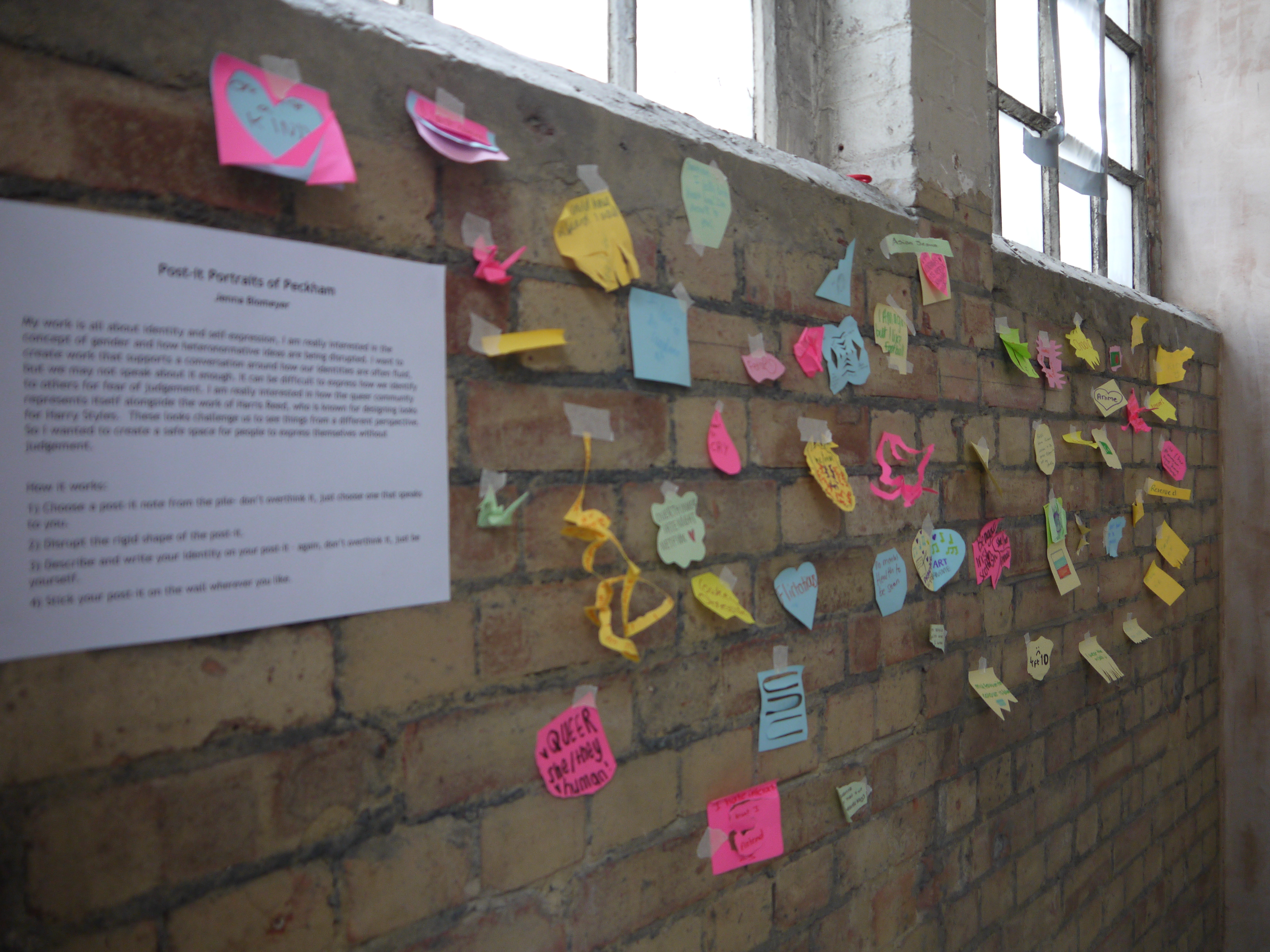
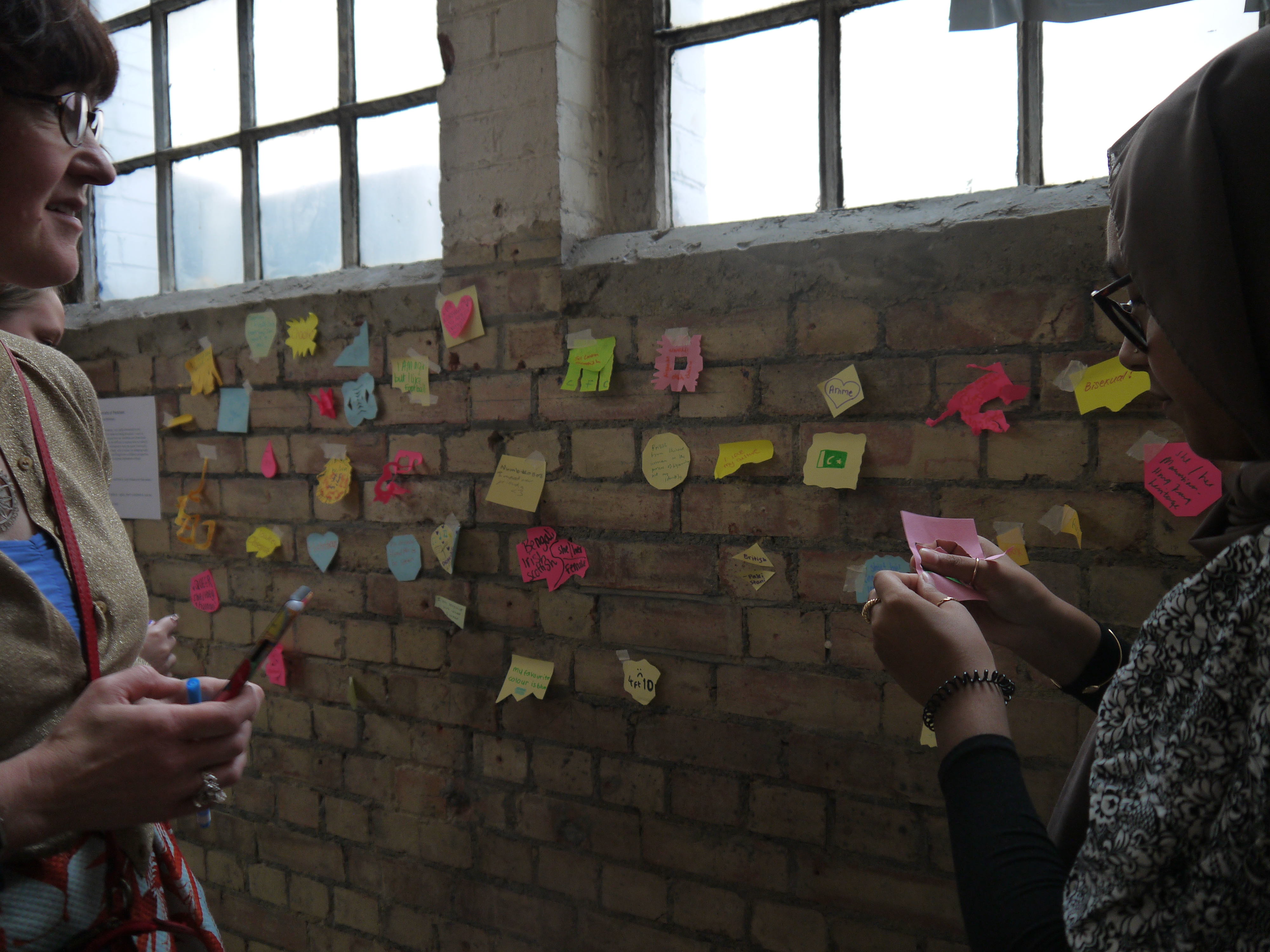
Using the post-it note as a metaphor for the heteronormative ideal, the square being defined by straightness, Jenna invited the community to share how they self-identified. The post-it note was offered as a site of transformation, available for adaptation through drawing, collaging, reconfiguring, ripping, sticking, folding or sculpting. Through challenging the set binaries of gender narratives, Jenna hoped to collectively bind and piece together fragments of thought to learn about our individual and collective ideas of gender and how they intersect with our identities as a whole.
Peckham Portraits – intersections of identity
Lost at Sea
Performance – film
Dress, glue gun, mod roc and paper maps
Rachelle Davy
Rachelle used this idea of the between space to further highlight the lost souls of the middle passage and subsequent histories of people of colour, and how they often feel in a middle space, between cultures. The use of the white mask to represent ugliness also challenges Western ideals of beauty and flips this history on its head. Rachelle was inspired by the work of artist Ellen Gallagher, particularly Bird in Hand, as she presents an idea of not only surviving history but actively embodying future possibilities. These ideas all come together in the performance as Rachelle searches for the souls of the lost children and then carefully attaching them to her before leaving the space. This is an affirmative statement of overcoming a dark history, moving forward taking the past with us but not being defined by it.
Repetition of adjustment:
me and my hijab
Nadia Uddin
This performance was inspired by the myth of Drexciya, which is based on the Middle Passage, the route for ships carrying enslaved African people from one geographical location to another across the Atlantic Ocean. The world of Drexciya begins with the creation of an underwater country populated by the unborn children of pregnant African women thrown off of slave ships. In this piece Rachelle has created a performance piece inspired by this myth. She embodies this idea through her character ‘Drexciya’, which we first encounter submerged beneath the sea. As she rises we see her searching for the souls of the lost children, which are represented through the hands. Rachelle was also interested in the West African practice of whitening the face to represent the person changing from one state to another. The white of the face is seen as ugly before they transition into something new and beautiful, this is often associated with young girls becoming women.
We all have a morning routine that we do automatically without having to think about it. For me, putting on my hijab at the start of the day before I leave the house has become almost like a ritual, so much so, that I do not even have to think about it. As I wear my hijab throughout the day, I am in a constant relationship of adjustment as it moves with my body, falling from my shoulder or shifting my posture. As I began to focus on this relationship, I paid more attention to the different folds, the action created by draping and re-draping the fabric. I began to see the beauty of the fabric imbued with a femininity which I previously hadn’t noticed.
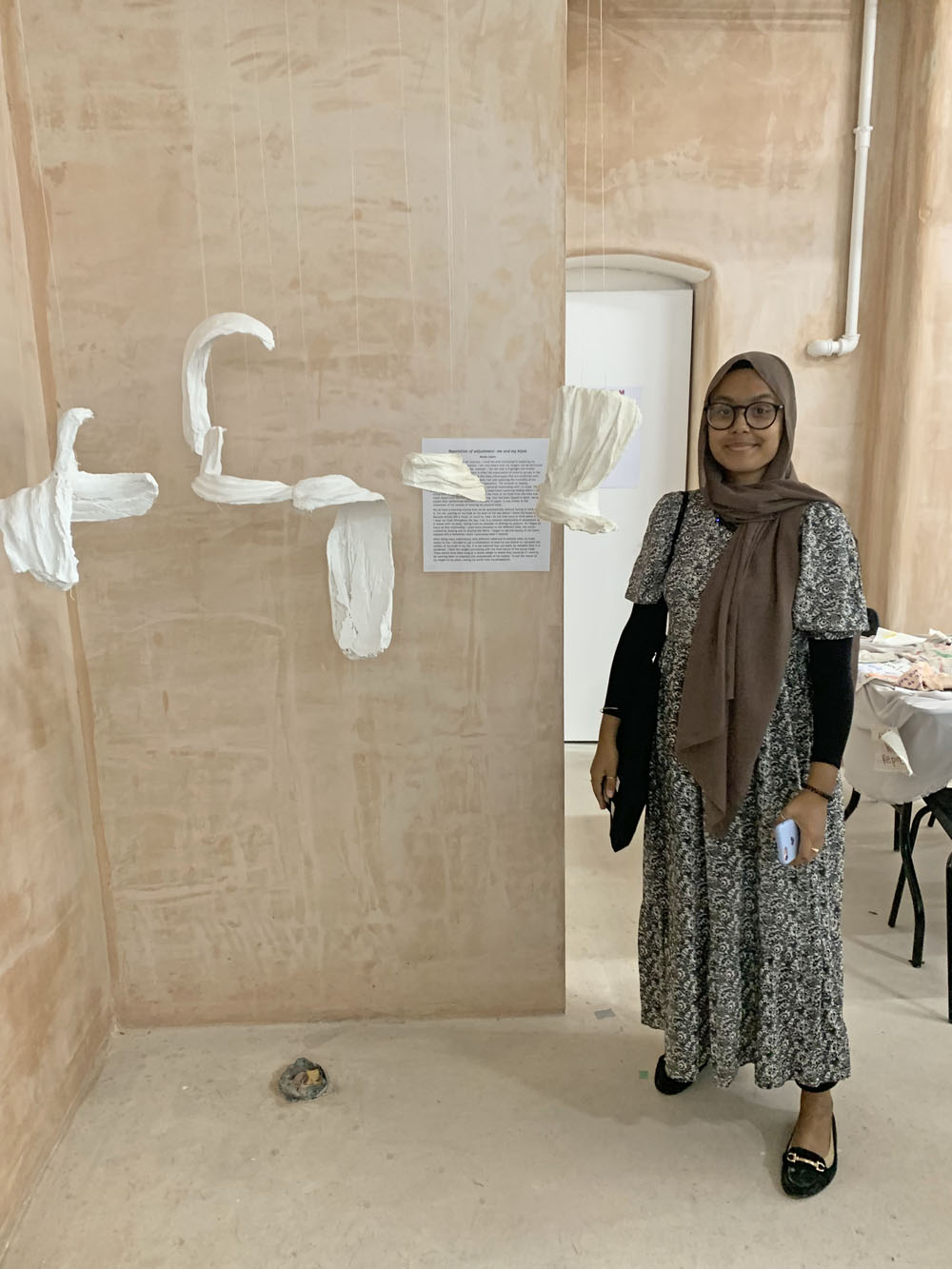
After doing many experiments with different materials to embody what my hijab means to me, I decided to use a combination of mod roc and plaster to represent the solidity of my hijab in my life. It is not material that can easily be mailable after it is hardened. I liked the weight contrasting with the fluid nature of the actual hijab. These pieces have been hung at a similar height to where they would be if I were to be wearing them to emphasis this embodiment of my routine. To put the viewer at my height in my place, seeing my world from my perspective.
What routines reflect your identity?
What stereotypes are projected onto you?
How do we unpick a misconception around your identity?
What would you like others to know about you?
As a community, what can we do?
Debate Cake with Nadia
–
–
–
–
–
To share her work and open up conversation around the Muslim identity with the community Nadia also held a Debate Cake. The focus was on questioning stereotypes, unpicking misconceptions and asking what we can do as a community to challenge misconceptions. As with all Debate Cakes there is an element of making, eating and drinking to support often difficult conversations.
For this Debate Cake Nadia chose to use a material with a similar feel and quality to that of her hijab. The idea being that the community could sit around this shared hijab whilst adding onto it their own experiences of racial stereotyping, bringing people together through one shared fabric. The shared fabric then also activated conversations around what can be done to challenge racial and cultural stereotypes.
As the community takes part in the exploration, they are invited to eat cake. As always, the cakes have an image from the artists work, so as the community discuss the topic they also ingest the ideas through the act of eating and drinking. For this debate Nadia made her own tea, spiced with cardamon and cinnamon, a drink she regularly shares with her family. This sensory exploration drew upon all of our senses, making it a truly embodied experience.